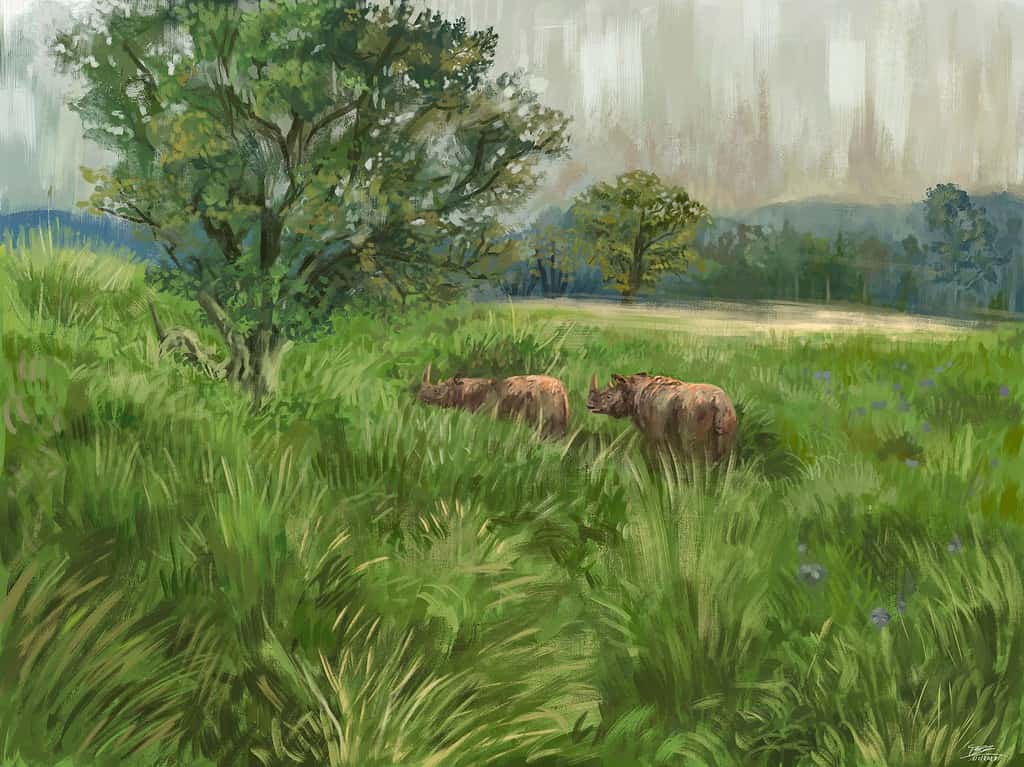For many years, the prevailing belief was that Europe was predominantly covered by dense forests between ice ages, up until the emergence of modern humans. However, a new study shows this was not the case. Researchers found the landscape featured a much greater extent of open and semi-open vegetation than previously thought.

A team from Aarhus University worked with samples of ancient pollen to identify which plants grew more than 100,000 years ago in the last interglacial period. Pollen is produced by most trees, flowers and shrubs and usually insects or the wind will pick this pollen up and spread it to other plants. Unfortunately, a lot of it lands on the ground — but over hundreds of thousands of years this pollen can become preserved.
“The idea that the landscape was covered by dense forest across most of the continent is simply not right. Our results show that we need to reassess our view of what European nature is,” Elena Pearce, study author, said in a news release. “Nature during the last interglacial period (with mild climate, similar to today) was full of variation.”
Debunking myths
The researchers focused on Europe’s previous interglacial period, called the Eemian, which lasted from 129,000 years ago to around 115,000 years ago. Most textbooks on biology and forestry will suggest that large parts of Europe were covered by dense forests during this time, which were later cut down by our ancestors with the advent of modern agriculture.
However, the pollen records tell a different story. The samples showed that plants that don’t thrive in dense forests often constituted large components of the vegetation. This is for example the case of the hazel, a bush that doesn’t grow in large quantities in dense forests, which covered large areas of the landscape in the interglacial period.
In beech forests (Europe’s natural wilderness), tall trees absorb most of the sunlight. This means that smaller trees and shrubs, such as hazel, have difficulty growing in a beech forest. “Hazel thrives in the open countryside and in open or disturbed forest, and tolerates disturbance from large animals,” Pearce said in a news release.
The role of large animals
The researchers estimate that 50% to 75% of the landscape was covered by open or semi-open vegetation. And this was likely due to the large mammals that lived there, including horses, elephants and rhinos. “They must have consumed large amounts of plant biomass,” study author Jens-Christian Svenning said.

By eating, the animals could keep tree growth in check, Svenning noted. While other factors could have played a part, such as floods or forest fires, there’s no evidence that suggests that this caused enough disturbance. “Forest fires encourage pine trees, but mostly we did not find pine as a dominant species,” he added.
While they aren’t 100% certain, the researchers found strong indications that large animals created the open areas. For one, large animals like bison in present-day Europe have the same effect in areas where they currently live. Secondly, beetle fossils (specifically dung beetles) from the last interglacial period also show that many large animals lived in the area.
An argument for rewilding
The findings not only suggest that we need to rewrite biology books but also that large animals may have an important role to play in biodiversity restoration, the researchers said. They called for countries to consider trophic rewilding, an ecological restoration strategy that uses species introductions to restore top-down trophic interactions.
“Many of the large animals from the interglacial period are now extinct, but we still have bison, horses and oxen,” Pearce said. “Without large animals, natural areas become dominated by dense vegetation, in which many species of plants and butterflies, for example, cannot thrive. Therefore, it’s important we restore large animals.”
The study was published in the journal Science Advances.


